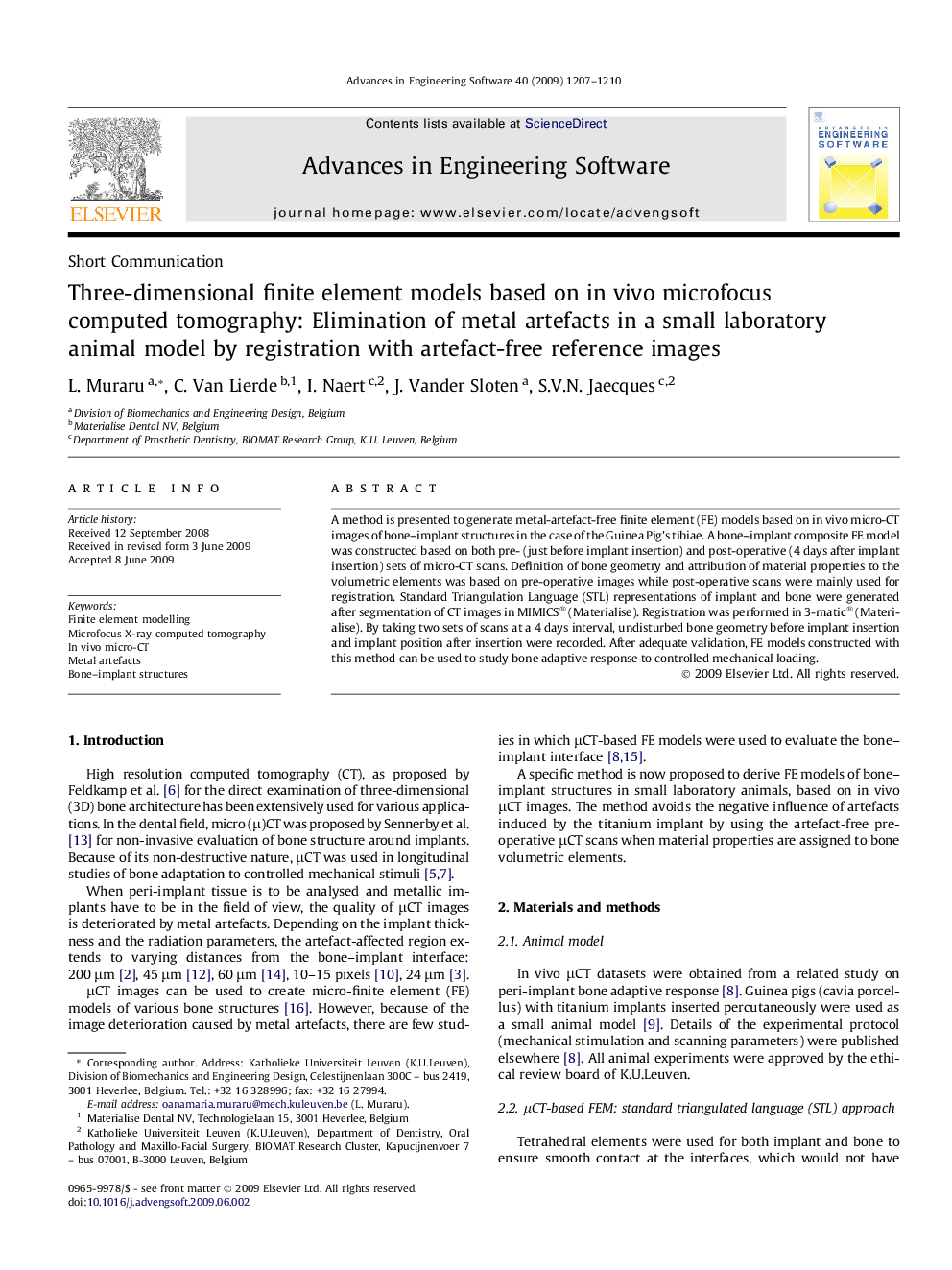| Article ID | Journal | Published Year | Pages | File Type |
|---|---|---|---|---|
| 567735 | Advances in Engineering Software | 2009 | 4 Pages |
A method is presented to generate metal-artefact-free finite element (FE) models based on in vivo micro-CT images of bone–implant structures in the case of the Guinea Pig’s tibiae. A bone–implant composite FE model was constructed based on both pre- (just before implant insertion) and post-operative (4 days after implant insertion) sets of micro-CT scans. Definition of bone geometry and attribution of material properties to the volumetric elements was based on pre-operative images while post-operative scans were mainly used for registration. Standard Triangulation Language (STL) representations of implant and bone were generated after segmentation of CT images in MIMICS® (Materialise). Registration was performed in 3-matic® (Materialise). By taking two sets of scans at a 4 days interval, undisturbed bone geometry before implant insertion and implant position after insertion were recorded. After adequate validation, FE models constructed with this method can be used to study bone adaptive response to controlled mechanical loading.
